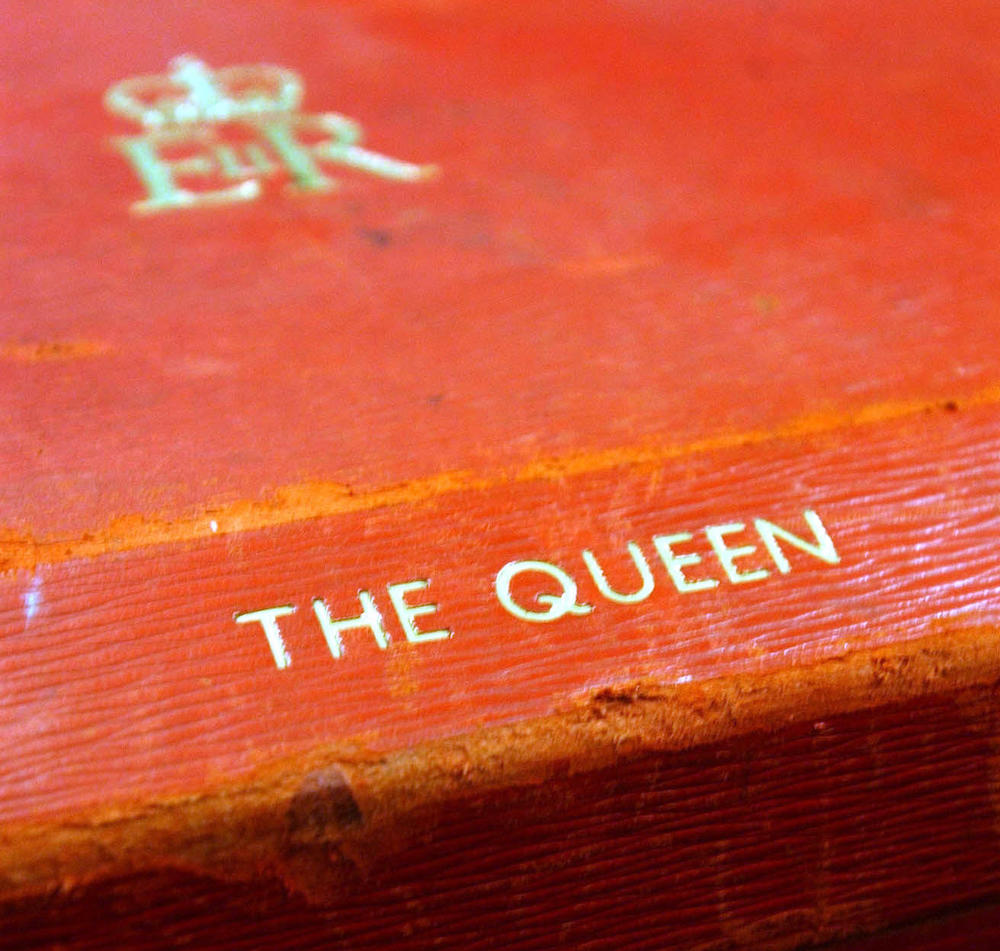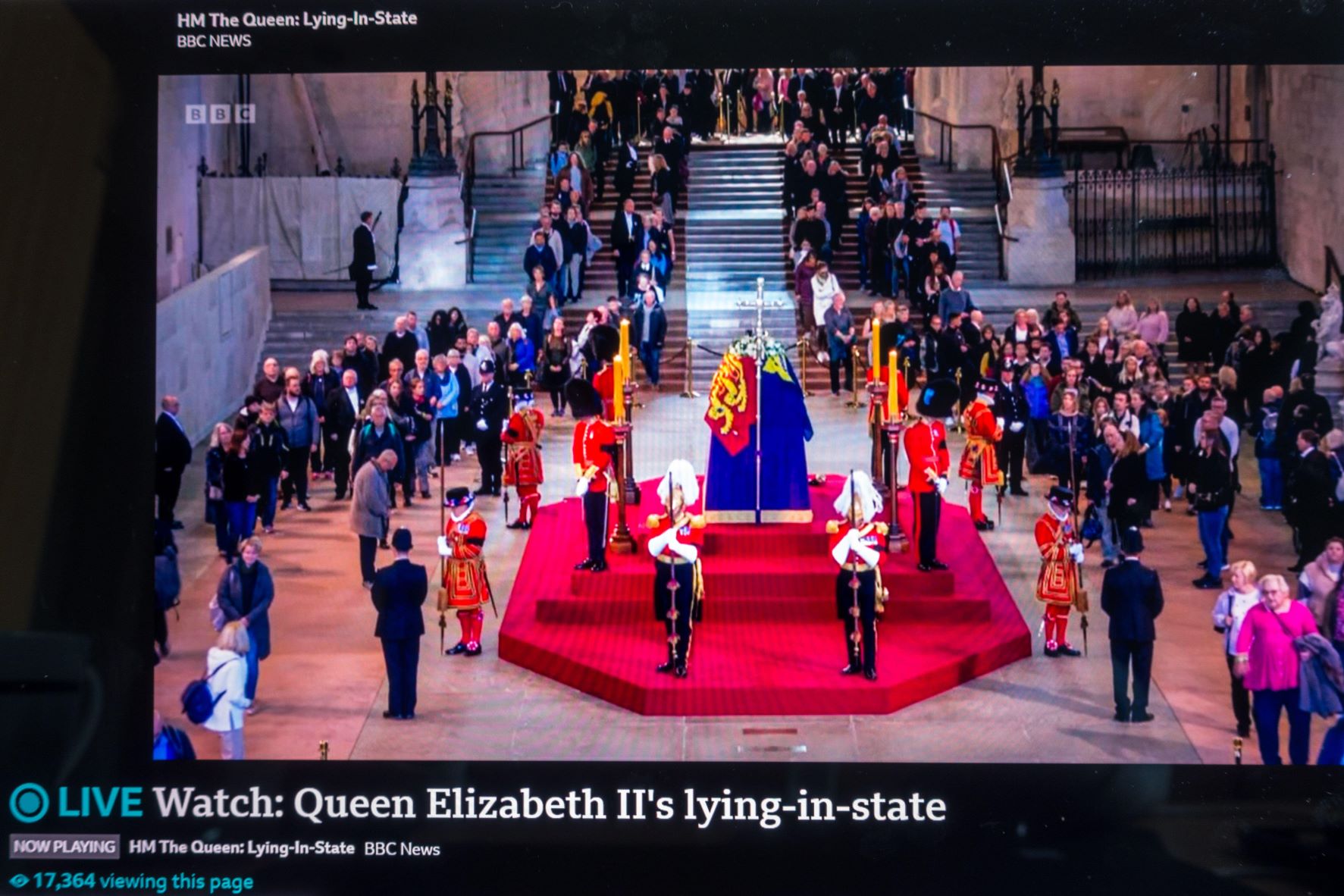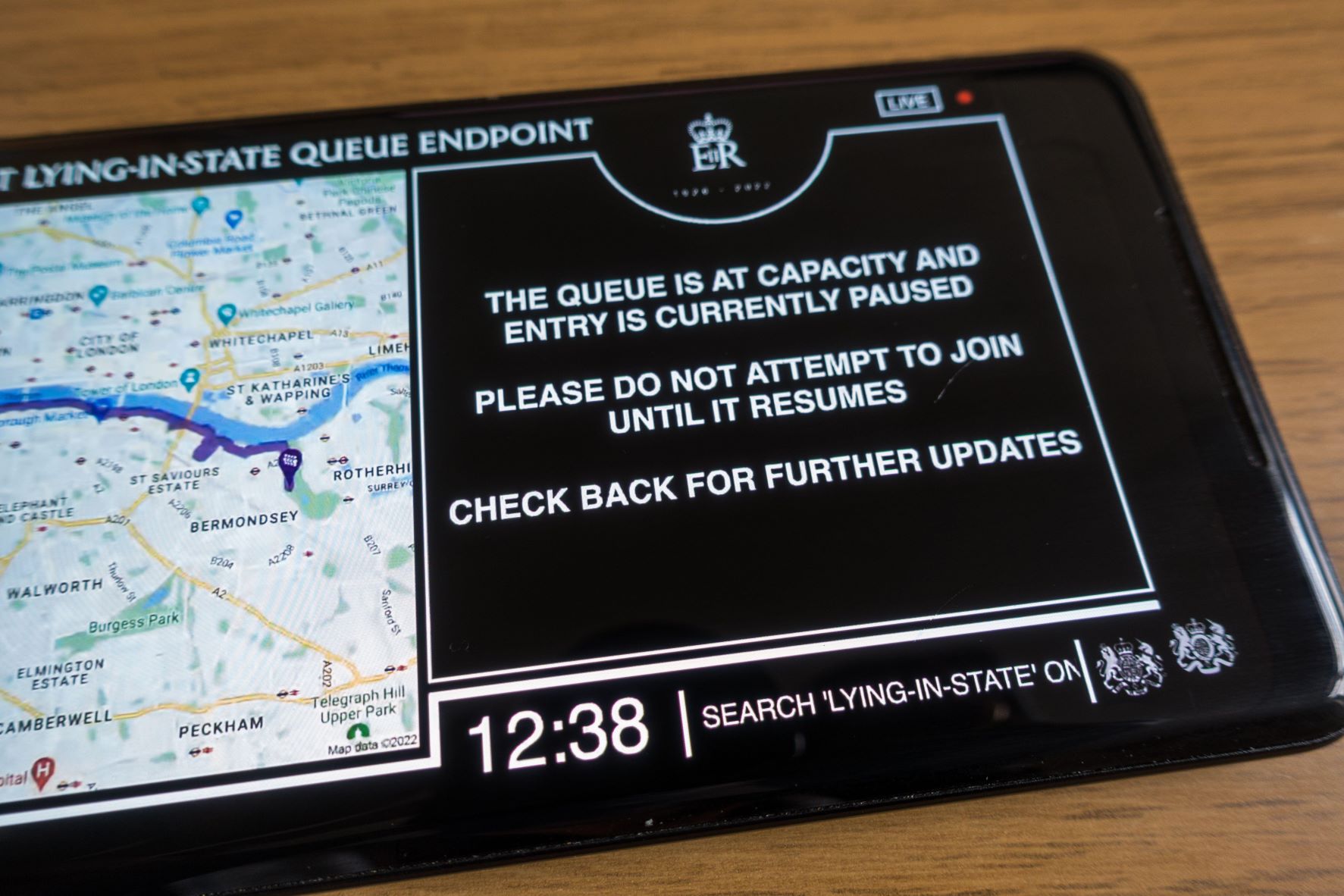As deputy director for ceremonials, what sort of planning and preparations had you been involved in for Operation Bridges before it began?
The Bridges plans have been developed over many years, coordinated across government by the Cabinet Office. In the Department for Digital, Culture, Media and Sport, this involved working up detailed plans with our event-management company, testing these plans, resolving supply-chain issues, developing comms, securing funding and training our volunteers. We were lucky to have a brilliant team working on this in DCMS, not just in our ceremonials team but also in wider parts of the department, including comms, finance, HR, legal and commercial who have been vital in our planning.
When the operation began, what were some of the first steps you had to take? As well as our team in DCMS, we brought together a huge team of volunteers to help us deliver the Bridges plans, including over 700 marshals. So, as well as activating our plans with our contractors and briefing our new secretary of state, one of our initial priorities was to get these volunteers up and running. The support we had from our volunteers was phenomenal and I would like to reiterate my thanks to them – we couldn’t have done it without them.
Had you been involved in any similar operations before, or planning exercises for Bridges? If so, what were the most helpful elements of those experiences?
I have had responsibility for Bridges for the last 6 years and was involved as Gold and Silver in the Duke of Edinburgh's funeral. Across the Bridges planning community we have worked together to prepare to deliver a fitting tribute to Her Majesty including testing and exercising the plans. We have learned and implemented lessons from every exercise and other big events like the Olympics, Commonwealth Games and Jubilee.
Looking back, what was the most valuable part of the planning undertaken before the operation began?
Through such intense planning, as well as delivery of other events like the Platinum Jubilee, we had built up really strong relationships with colleagues in other government departments, and with wider partners, which were invaluable when it came to getting on with delivery. There was an amazing sense of team spirit and willingness to help each other.
When the Operation began, what were some of the first steps you had to take?
As well as our team in DCMS we brought together a huge team of volunteers to help us deliver the Bridges plans, including over 700 marshals. So as well as activating our plans with our contractors and briefing our new Secretary of State one of our initial priorities was to get these volunteers up and running. The support we had from our volunteers was phenomenal and I would like to reiterate my thanks to them, we couldn’t have done it without them.
Can you give us a sense of your ‘daily rhythm’ or any regular schedules during the Operation? Or was every day very different?
Each day there was a regular drumbeat of meetings to ensure coordination within DCMS, amongst delivery partners and between Ministers. Outside of these meetings I spent my time helping to unblock issues that were cropping up that day and making sure the team were supported. It was an incredibly busy and time flew past really quickly.
What did you learn about yourself or the civil service through working on Bridges?
It sounds a strange thing to say, given that it was a very sad occasion, but I really enjoyed working on Bridges. There were times, though, when my resilience was tested and I was lucky to have brilliant colleagues to help keep me going. It was great to see the positive feedback about the civil service delivery and the MoD did a spectacular job of demonstrating the best of British pomp and ceremony to the rest of the world.
What was the most memorable or moving moment of the operation?
I will never forget the final hour of the end of the lying-in-state queue when we worked so closely with parliament colleagues to time the last person walking through Westminster Hall with such precision. I felt a huge sense of relief and pride at the culmination of an enormous amount of effort from so many people on such a historic moment.
 Ellen Atkinson, Cabinet Office
Ellen Atkinson, Cabinet Office
What was your role in Bridges and what did that involve, practically?
I was the overall Gold for Bridges in the Cabinet Office, working for Sarah Healey as the senior responsible officer. This meant I was responsible for the Bridges Secretariat, which coordinated across all the partners involved in delivery, bringing together a common picture of the status of the operations across the UK and supporting the ministerial meeting which took place daily. In practice, this meant working with the ‘gold’ leads responsible for each part of the operation to provide assurance to ministers and resolve any issues.
Had you been involved in any similar operations before, or planning exercises for Bridges? If so, what were the most helpful elements of those experiences?
I have had responsibility for Bridges for the last six years and was involved as Gold and Silver in the Duke of Edinburgh’s funeral [in 2021]. Across the Bridges planning community we have worked together to prepare to deliver a fitting tribute to Her Majesty, including testing and exercising the plans. We have learned and implemented lessons from every exercise and other big events like the Olympics, Commonwealth Games and [Platinum]Jubilee.
What were some of your first tasks as the Operation was activated? Did you have time at that point to reflect on the significance of what you were working on?
The Bridges Secretariat put out an alert to all operational delivery partners in and outside government to stand up their plans once the very sad announcement was made about Her Majesty. It was critical we sent this in a timely way so we could have a smooth start to a no-notice activation of plans.
I have acutely felt the responsibility of assuring and supporting the delivery of the plan for a long time. My main feeling on activation was wanting, in everything we did, to reflect the deep commitment of Her Majesty to public service and deliver for His Majesty the King at a time of deep personal grief.
Did your knowledge or experience from your previous roles help during the operation?
I was the director of constitution before becoming the director responsible for Bridges. My previous experience helped me understand the deep constitutional and historic significance of events. It made certain events like the breaking of the Wand of Office and the returning of the Crown, Sceptre and Orb particularly poignant.
What was the most challenging part of the work, either operationally or personally?
The responsibility of the role, because of the importance to the Royal Family, internationally, nationally and personally of delivering a fitting tribute to Her Majesty.
And what helped you most to tackle those challenges?
I had an incredible group of people to work with, and for, from the civil service, royal household, ministers, other government departments, parliament and partner organisations across the UK. We have always called it a “Bridges Community” and it really is. Something this big in scale and scope cannot be delivered without absolutely excellent people across the UK working together.
What was the most memorable or moving moment of the operation?
There are so many, but I think looking down on Parliament Square as the national minute of silence happened the night before the funeral. I remember seeing the crowds and workers bowing their heads outside the window and the images on the television from around the UK. It was so moving and showed the deep love and esteem the public held Her Majesty in.
 Faye Jackson, DCMS
Faye Jackson, DCMS
What was your role in Bridges and what did that involve, practically?
I was the press lead for Bridges within DCMS and this involved working closely with colleagues across our press, digital, internal communications and policy teams. I worked on Bridges for over five years, however preparations have been going on for much longer. During activation I helped to stand up a DCMS communications team to deal with the huge influx of media enquiries. We were also responsible for proactive comms around flags, silences, processions and lying-in-state. This meant working closely with colleagues across DCMS, wider government and the Palace to ensure all our proactive and reactive communications were aligned and easy for the public to understand, to help them pay their respects.
In what ways were the comms around Bridges similar to other large ceremonial projects you’ve worked on, and in what ways was it different?
I’ve managed the media at a number of major government events including the Platinum Jubilee, Remembrance Sunday, the First World War centenary and 75th anniversaries of VE Day and VJ Day, which gave us a solid foundation to build upon for how to manage large scale national events. I’m so proud of how people across all grades and disciplines joined together to provide the best possible service to the public.
What made this event different to others I’ve worked on, though, was the sheer scale of public and media interest and the appetite for information.
Working in government means you’re used to the media scrutinising each announcement, which they did do for Bridges, but we also used our relationships built over years of working with broadcasters to use them as an extension of our public information campaign. For example, the BBC and Sky News both broadcast our YouTube queue tracker live and we were in constant contact with them to issue updates regarding the queue’s length, estimated waiting times and when it would close.
What made this event different to others I’ve worked on though was the sheer scale of public and media interest and the appetite for information. Working in government means you’re used to the media scrutinising each announcement, which they did do for Bridges, but we also used our relationships built over years of working with broadcasters to use them as an extension of our public information campaign. For example the BBC and Sky News both broadcast our YouTube Queue Tracker live and we were in constant contact with them to issue updates regarding the Queue’s length, estimated waiting times and when it would close.
There was a lot of tradition and history involved in Bridges, how far were you able to be innovative or use new methods around the comms?
There was a huge amount of tradition and protocol involved in everything we did for Bridges, however living in the digital age meant that we were able to reach the public in ways we couldn’t have done previously. Our viral Queue Tracker is a good example of the government using innovative ways to provide an effective public information service 24/7.
What did you learn about the civil service through this work?
I would say the greatest lesson I learnt about the civil service while working on Bridges was the ability of every individual to seamlessly move from their day job into activation. Every person who was called upon to help did so happily, giving up their evenings and weekends and working around the clock to ensure everything ran smoothly.
Have you taken any lessons or reflections from Bridges back to your “day job”?
I would say: firstly, always be flexible. Despite having all our comms material prepped years in advance, the sheer appetite for information and stories meant we issued more proactive communications than initially expected. Without the tenacity and flexibility of the DCMS comms team, we wouldn’t have been able to adapt our plans to suit the needs of the media and public.
Most importantly, Bridges reminded me how talented and dedicated those working in the civil service are, particularly the DCMS comms team, which went above and beyond throughout.
What was the most memorable or moving moment of the Operation?
There were two moving moments for me. Firstly, standing at the window of 100 Parliament Street and watching the Queen’s coffin being taken down Whitehall to the Palace of Westminster, and then seeing the pictures of the lying-in-state in the papers the next day. I’d written and rewritten the lying-in-state press release a number of times over the last five years but nothing I could have written could do justice to the atmosphere and mood within the Palace of Westminster with the public filing past in silence.
The other was meeting some of the first people to go through the lying-in-state, who we looked after as they were doing media interviews. They had queued through the night to pay their respects and I will never forget how overcome with emotion they were and how thankful they were to those who had made that moment possible. It reminded me that all of the work and the hours all of the civil service had put into Bridges was worth it and that it meant so much to so many people from Britain and around the world.
 Andrew Simpson, DCMS
Andrew Simpson, DCMS
What was your role in Bridges?
As head of digital communication, my role was, in a nutshell, using online channels to ensure the public knew what the mourning and funeral arrangements were, for the elements DCMS managed (flags, silences, elements of the processions and of course the lying-in-state). This meant making sure there was clear public-facing guidance and products that were responsive and up-to-the-minute across the week, to help the public mourn and know how they could take part (both in person and remotely).
Did your role change over the course of the operation?
It didn’t change as such because I knew what the rhythm of the week was in advance thanks to years of planning, but the pressure certainly ramped up when the lying-in-state opened. We had to be ready to manage what would be an unprecedented public event to make sure as many people as possible knew the plans and could attend or observe in a respectful way.
To do this we built and launched a live queue tracker (which informally became known as “QueueTube”) that displayed the end of the queue in real time, with estimated queuing times, the nearest landmark, What Three Words location and even the weather! All to help people plan their attendance and know what to expect. This took on a life of its own, with nearly 10 million views across the week.
What was the most challenging part of the work, either operationally or personally?
The most challenging part of our work was maintaining the tracker, a tool which had never been delivered before on this scale. Once it was live there was no going back, so we had to be iterative and develop it based on user feedback in the background while it was live.
Having good contacts with YouTube (for technical support) and the media (to ensure they always had the latest link and would feature it on their hourly national news bulletins) really helped and meant it provided a genuine service to hundreds of thousands, if not millions, of people. We also committed ourselves to running the tracker 24/7, so all audiences were served, no matter what time they queued up, and providing around-the-clock support was a real team effort.
How important was the support of your team and other departments in meeting that challenge?
Put simply, the queue tracker and our accompanying social media products could not have been delivered without the dedication of our small team, who worked around the clock for 10 days to make sure we could deliver a service on this scale. We’d also worked on the Platinum Jubilee and Commonwealth Games earlier in the year, so we were well placed to be ready to deliver innovative event comms at speed and under pressure.
The real heroes, though, were the community of amazing cross-Whitehall digital and comms volunteers, who took it in turns to stand at the back of the queue and share real-time location data. Without them the tracker wouldn’t have been possible.
Have you taken any lessons or reflections from Bridges back to your “day job”?
Firstly, don’t be afraid to challenge ourselves and go beyond what even the experts say is possible. Google, for example, had been looking at mapping solutions for some time, but our queue solution pushed the envelope further.
Secondly, always think about how best we can tailor our products for online media outlets as well as social media and have a Plan B (and Plan C) in place. Our live-streaming queue tracker was actually three products brought into a single package (mapping, data-driven graphical overlays and live streaming via YouTube). We’ve used a similar approach for live streaming the Remembrance Sunday service each year from the Cenotaph in London and this year we’ll be making this an even more immersive experience, thanks to what we’ve learned from QueueTube.
What was the most memorable or moving moment, for you?
After almost 100 hours of continuous live stream, pressing the button to close the queue tracker was quite a moment. The whole team was so proud to have played a part in delivering the tracker and all our social media content, which was our most engaged-with ever. Knowing we’d played a part in helping the public pay their respects for the monarch’s passing is something that will stay with us for the rest of our careers.